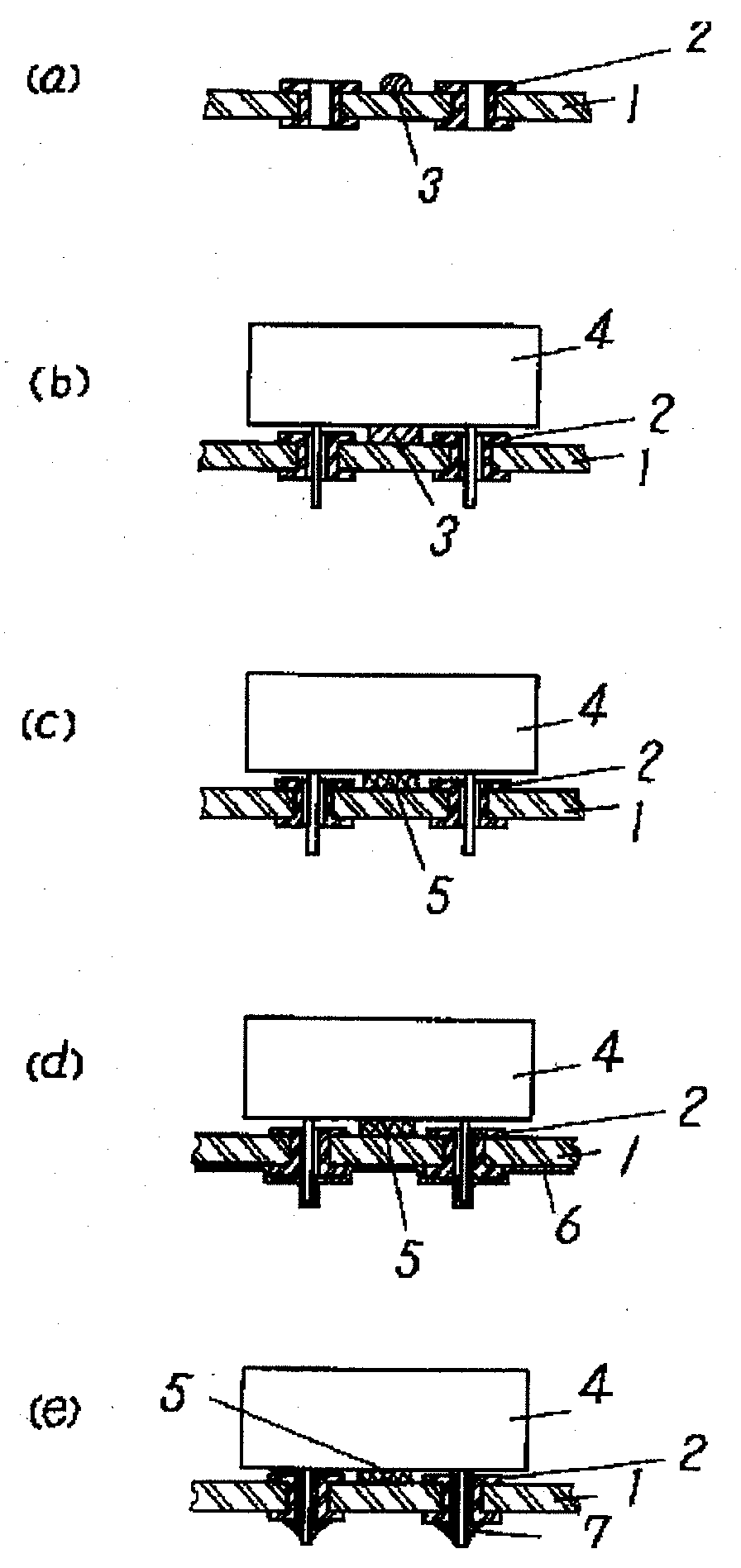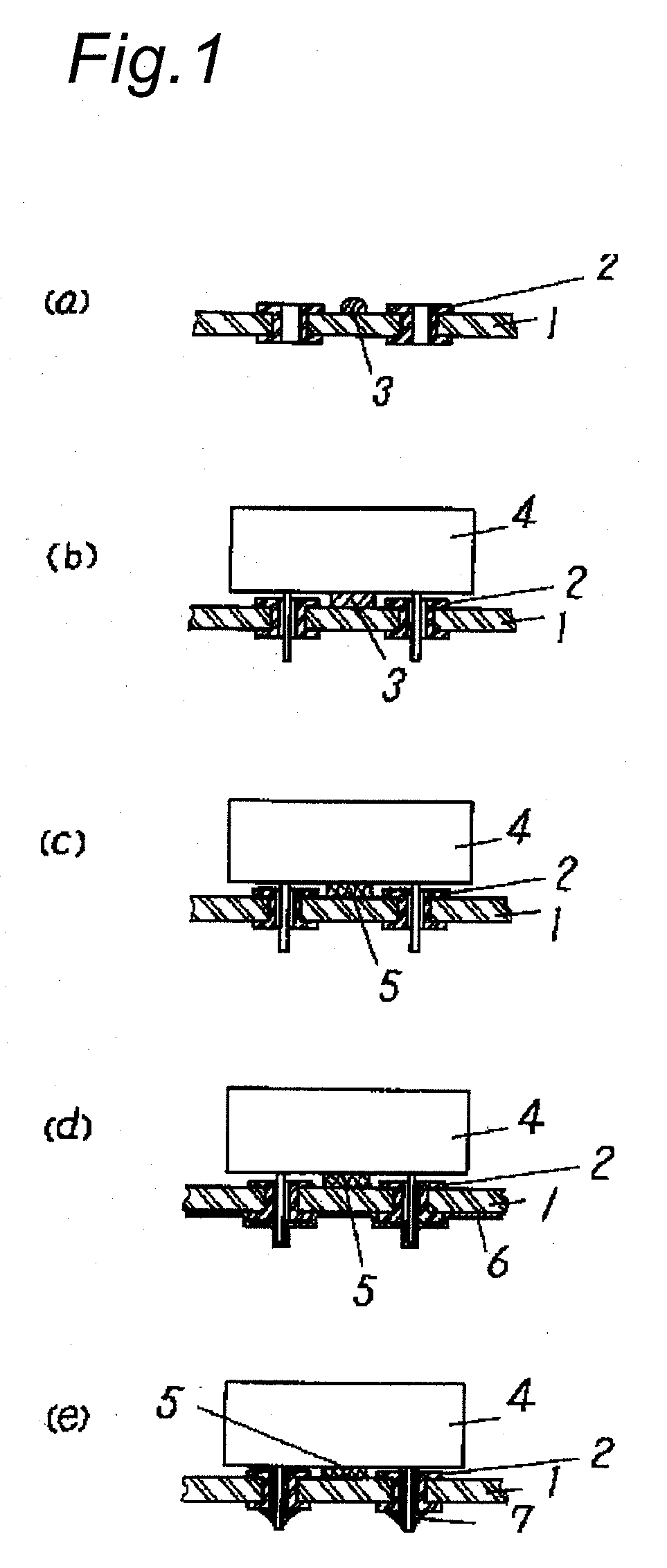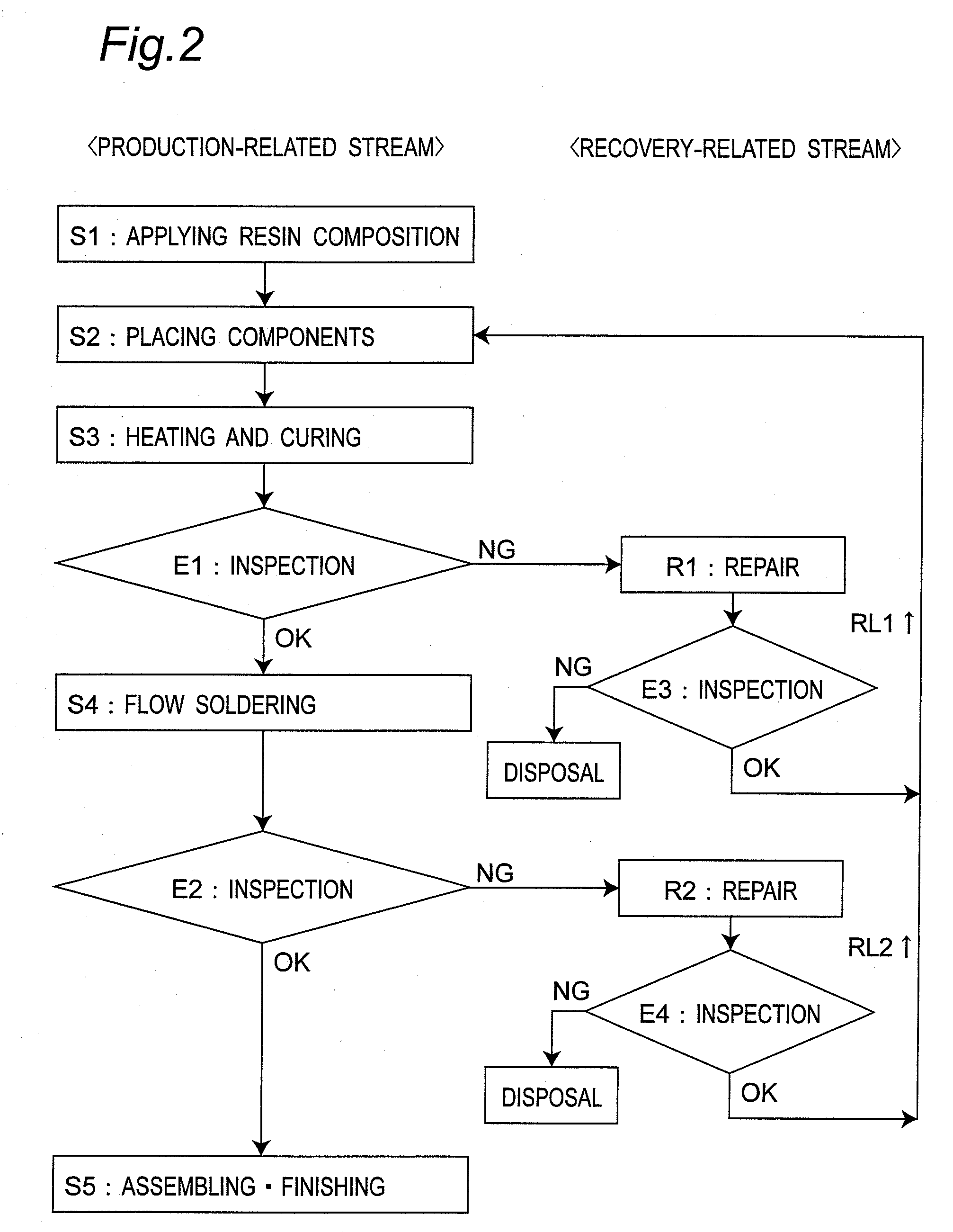Heat curable resin composition, and mounting method and reparing process for circuit board using the heat curable composition
- Summary
- Abstract
- Description
- Claims
- Application Information
AI Technical Summary
Benefits of technology
Problems solved by technology
Method used
Image
Examples
example 2
[0131]Assuming that the electronic components may have fault, the following operation was conducted on the circuit board in the tentative fastening stage so as to recover the circuit board without damage. The resin composition had the same composition as that of Example 1, with glass transition (Tg) point of 42° C. Temperature (T1) of the circuit board surface below the miniature transistor and the temperature (T2) of the resin composition were measured with thermocouples similarly to Example 1.
[0132]A soldering iron was pressed against the miniature transistor that was fastened on the circuit board by means of the resin composition and, when T2 reached 50° C., the miniature transistor was lifted with tweezers. T1 was 75° C. at this time. Similarly to Example 1, it was easy to break the resin composition so as to separate the miniature transistor from the circuit board.
[0133]Then the miniature transistor was sent to the electronic components recovering process, but was not recycled ...
example 3
[0134]The same circuit board as that of Example 1, taken out of the flow soldering connection process (S4), was processed in the repairing process (R2). The following operation was conducted on the circuit board in the soldering process, and both the circuit board and the miniature transistor were recovered without damage.
[0135]With leads of the miniature transistor surrounded with a copper braid, a soldering iron was applied to the leads to melt most of the solder deposited thereto so as to absorb the solder into the copper braid and remove it. Then the circuit board was placed on a workbench whereon a warm air heater capable of blowing air of 80° C. was put to adjoin therewith, and warm air was blown to melt the resin composition, while measuring the temperatures (T1 and T2).
[0136]Similarly to Example 1, it was easy to break the resin composition and separate the miniature transistor from the circuit board.
[0137]Then the miniature transistor was sent to the inspection process E4 t...
example 4
[0138]The same circuit board as that of Example 3, taken out of the flow soldering connection process, was processed in the repairing process of the invention of the present application. The following operation was conducted on the circuit board in the soldering process, and the circuit board was recovered without damage.
[0139]With leads of the miniature transistor surrounded with a copper braid, a soldering iron was applied to the leads to melt most of the solder deposited thereto so as to absorb the solder into the copper braid and remove it. Then a soldering iron was pressed against the miniature transistor and, when T2 reached 50° C., the miniature transistor was lifted with tweezers. T1 was 75° C. at this time, and surface temperature of the miniature transistor was 105° C. Similarly to Example 3, it was easy to break the resin composition so as to separate the miniature transistor from the circuit board.
[0140]Then the miniature transistor was sent to the inspection process E4,...
PUM
| Property | Measurement | Unit |
|---|---|---|
| Temperature | aaaaa | aaaaa |
| Temperature | aaaaa | aaaaa |
| Temperature | aaaaa | aaaaa |
Abstract
Description
Claims
Application Information
 Login to View More
Login to View More - R&D
- Intellectual Property
- Life Sciences
- Materials
- Tech Scout
- Unparalleled Data Quality
- Higher Quality Content
- 60% Fewer Hallucinations
Browse by: Latest US Patents, China's latest patents, Technical Efficacy Thesaurus, Application Domain, Technology Topic, Popular Technical Reports.
© 2025 PatSnap. All rights reserved.Legal|Privacy policy|Modern Slavery Act Transparency Statement|Sitemap|About US| Contact US: help@patsnap.com



